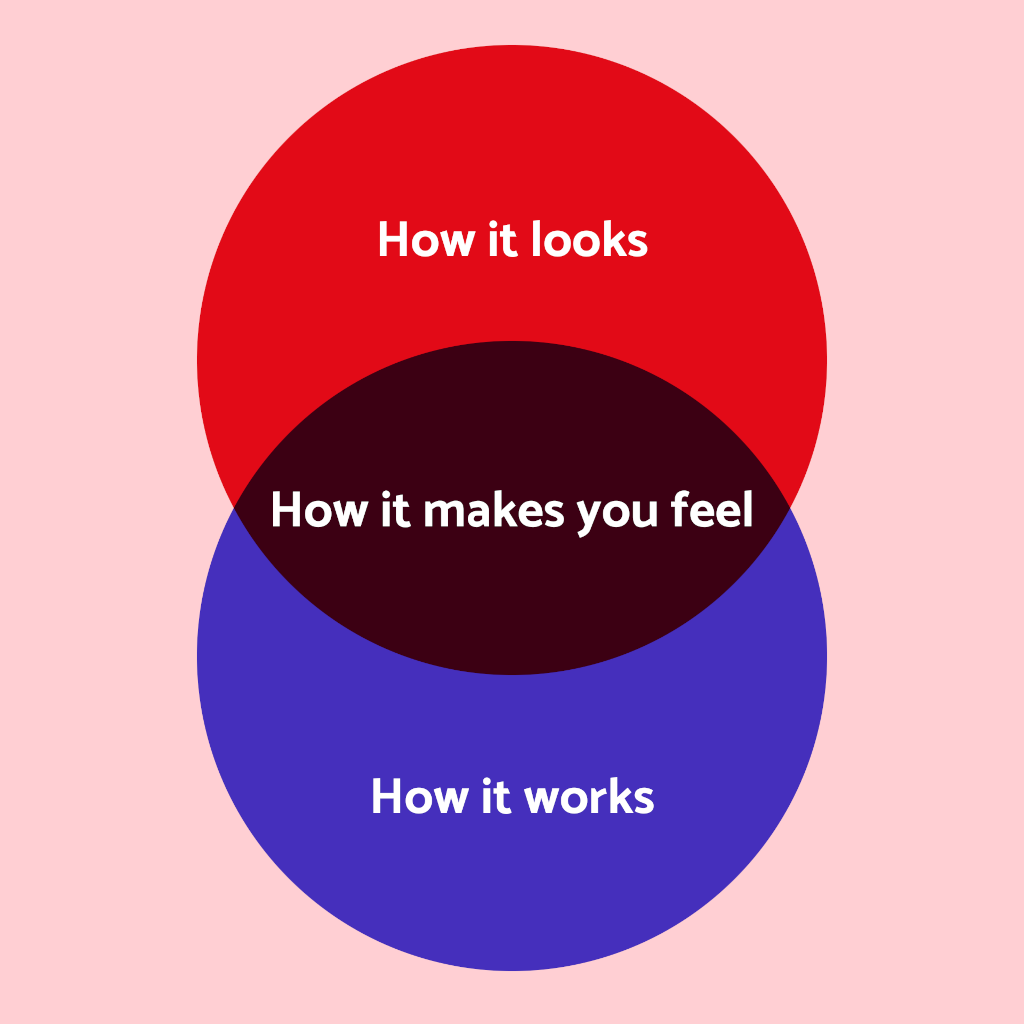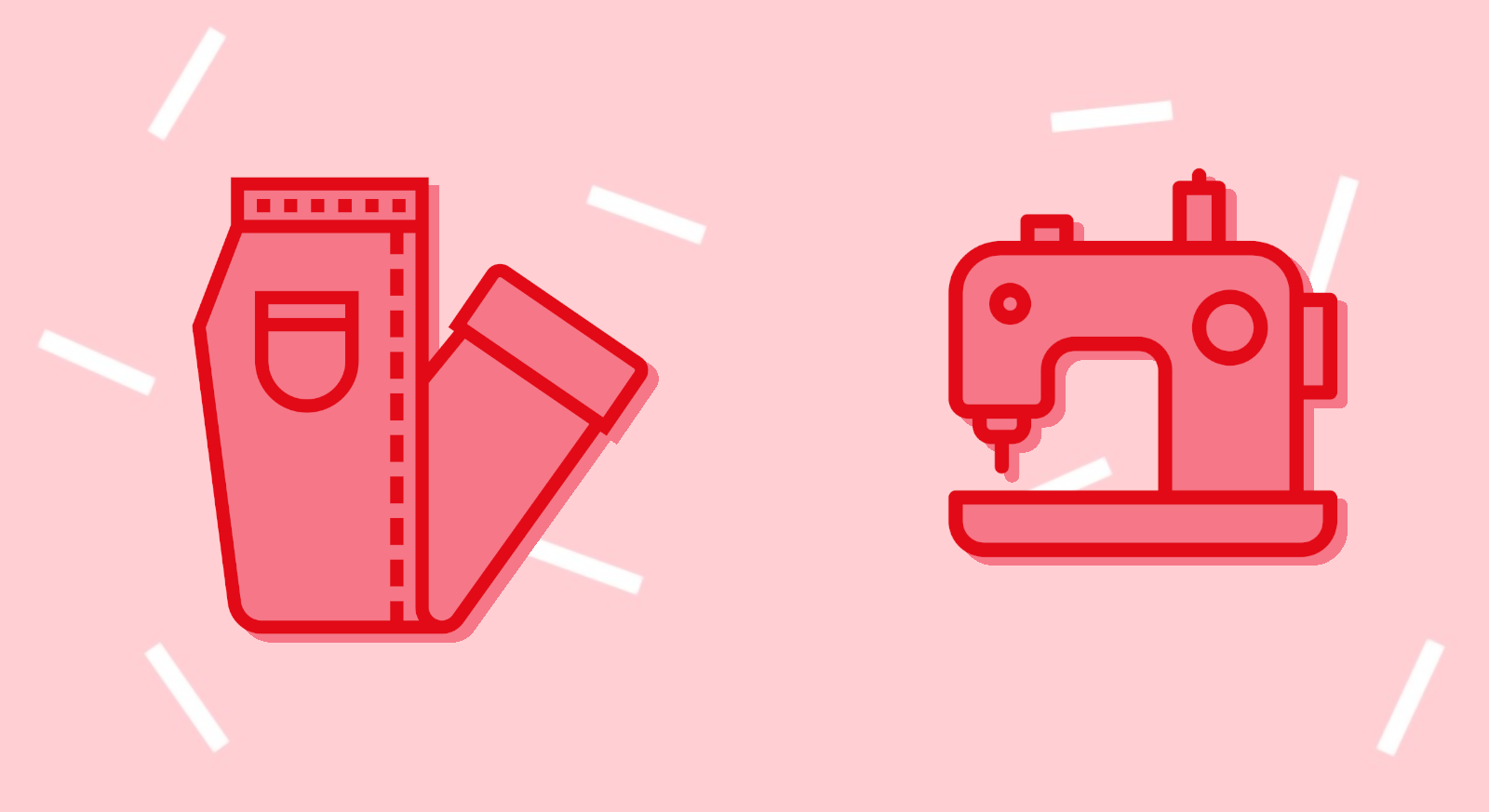Design is important. It starts with an understanding of human nature and stimulates people’s emotions. It also delivers concrete results for businesses, people and the planet.
Put simply, design helps you identify the problems that cause your customers pain – and solve them.
By removing friction and creating positive experiences, you influence the behaviour of your target audience. And that gets more people to the end point: a sign-up or sale.
A positive experience and feeling will also increase their perception of the value of your product or service. It might also translate into advocacy, helping your customer base grow as those who've experienced what you do sing your praises in public.
You might say that if you make a sincere effort to look after the user’s needs, the business will look after itself.

The feeling, the emotional response, comes from the experience you have when you engage with a product or service.
Designers consider a person’s experience not only when they’re using the service but also before and around it. It’s vital to understand their wants and needs, and also the context in which they exist.
From there, we can find opportunities to innovate. We can do things differently, building the experience around the user.
We declutter the experience by and help users make decisions quickly, with confidence, by:
- remove frustrating elements and stumbling blocks
- reducing cognitive load: “Don’t make me think.”
Consumer expectations are changing
As online and digital services mature, users are increasingly used to them being fast, responsive and functional.
They’re savvy and experienced and will criticise or reject services that don’t meet that standard, or their needs.
As behaviours change radically, design can take a role in leading this transition.
Monzo, “the bank that lives on your smartphone”, was a risky product for a finance brand. How do they provide users with a satisfying experience?
First, they’ve honed the interface to make it as clean and simple as possible. The language is clear and simple, too, demonstrating content design in action. It’s easy to use, in short.
Secondly, they’ve focused relentlessly on delivering features that support customer needs. The app is packed with powerful tools that feel instinctive and natural to use, making it easy for users to find information and reducing the need for customer support.
This approach has allowed Monzo to scale and grow at an impressive rate. It sometimes feels these days as if every other debit card you see in shops and restaurants is in their distinctive coral pink.
Design influences conscious consumerism
Perhaps it's wishful thinking on my part but it feels to me that recent global events have created a heightened sense of caring, community and empathy.
People are increasingly aware and concerned about the physical, emotional, and even financial health of those around them.
Design is a discipline built around empathy and serving the needs of others. It is well placed to add another layer, caring not only for the individual but for the community but for the planet as a whole.
As consumers demand evidence of ethical behaviour when they’re choosing which products and services to buy, there’s also an opportunity here.
They are using their personal power to choose companies with a conscience.
Design can help build trust, loyalty and advocacy for businesses which are felt to be doing the right thing.
Human-centred and community-centred design are where we’ve been. Prioritising human-centric design and a frictionless experience has resulted in us consuming and throwing away more. Now, ideas around what it means to be human-centred have become more inclusive.
You might say we’re evolving to become nature-centred or people-planet designers. Already, sustainability is beginning to become a focus in the ideation phase of projects.
Driven by consumer demands, and by their collective values, businesses find they need to:
- tackle complex environmental issues
- user fewer resources
- create less waste
- reduce emissions
It’s the right thing to do, and it’s good for business.
Consider the experience of buying a pair of jeans. You find the pair you like and after the purchase, your connection with that company is over. You wear them, throw them away, and buy your next pair from someone else. There’s no loyalty – and a lot of waste.
But imagine if those jeans came with a maintenance package. A tailoring service that could adjust the waist as your body shape changed, for example, or the option to upgrade them with an extra pocket or a hidden pocket with a clip for your keys.
That maintenance package could also include a supply of dye every six months to keep them looking new.
You could even send them off for patching and repairs, giving them a unique personality while also prolonging their life and reducing waste.
The experience would be made more valuable for the consumer meaning they’d be happy to pay more, buy more from the same brand, and advocate the products to their peers.
Extending the experience and offering more value is a good investment for a business. Sustainability and profitability can coexist.
The value of sustainable products
One company that understands the value of a sustainable product is outdoor clothing brand Patagonia. When most companies are encouraging high consumption and repeat purchases, Patagonia focuses on waste-free purchases.
In 2005, Patagonia launched the Common Threads Recycling Program. The goal was to reduce the number of products its customers purchased. That's a counterintuitive move in the age of disposable fast fashion.
They also created a second-hand market for Patagonia garments that no longer fit or are no longer worn. They partnered with eBay to create a shopfront and created a marketplace on their own website.
Patagonia’s next step was to launch a campaign in 2011 to dissuade customers from purchasing clothing that they didn’t need in the first place.
On the busiest weekend for retailers in the US, a New York Times advertisement from Patagonia featured a picture of one of its highest-grossing fleece jackets below the words: “DON’T BUY THIS JACKET.” Underneath was a detailed description that defended Patagonia’s rationale based on the negative environmental impacts caused by consumerism.
Despite Patagonia’s efforts, sales increased by approximately 30% in the nine months following the ad. This is evidence that a business can challenge consumerism, focus on sustainability and still be profitable.
Allowing product designers to focus on creating a product that is built to last has earnt Patagonia trust and loyalty from their customers.
Before, during and after
Companies need to look at what it takes to turn a one-off purchase into an ongoing service.
By looking at the before, during, and after of the product or service you can create a value chain map and identify opportunities to add value to consumers.
Are you sourcing ethically and sustainably? If not, consider challenging or changing your suppliers. Are you working with retail and after-sales partners who share your values?
In short, you need to be shaking out every opportunity to do the right thing along the lifecycle of your product.
Service businesses can also extend support beyond the primary task they’re set up to perform.
Let’s look at Amazon as a counterexample.
It provides an ecommerce service to their customers that is focused on being the quickest and shortest sales experience. Choice and easy transactions have been key to their success.
They have sped up the sales experience so that customers can receive deliveries within hours of the purchase.
But are they providing the best experience for their customers, or are they focused solely on sales optimization?
During my first pregnancy, I would regularly visit a local baker. What kept me going back to the same bakery, apart from their delicious cakes, was their ethical approach to business.
Every Wednesday morning, they would allow customers to come and barter for bread. People would come with jars of home-made jam or something they’d knitted and trade it in for a sourdough loaf.
When my son was a few weeks old I visited the bakery on a Wednesday morning and they offered me a loaf of bread for a baby viewing. The owners cooed over my tiny baby for five minutes while I talked about sleep and the experience of being a new mum.
I walked away from that experience with a feeling of pride, community, and a sense of belonging. My experience with that business was overwhelmingly positive and I looked forward to engaging with them again.
On a larger scale, Timpson’s is a company which uses kindness as the golden thread that runs through its brand and offer. Around 4% of their transactions are delivered for free, for example. They are also notably generous in their hiring processes, taking on and training ex-offenders.
Chief Executive James Timpson says: “We know that kindness by our colleagues is repaid by loyalty from our customers.”
A business risks stagnation if it doesn’t constantly review the value and experience it offers customers.
Businesses need to take responsibility for the full experience of their product or service, not just the buying experience. Only then can they be confident they’re delivering meaningful value for the individual, the community, and the planet.
Is your business getting this right?
Values should be at the core of the design process for a business. If you want to understand your current value offering, review the experience your customers are having or are looking to create new value, get in touch.



